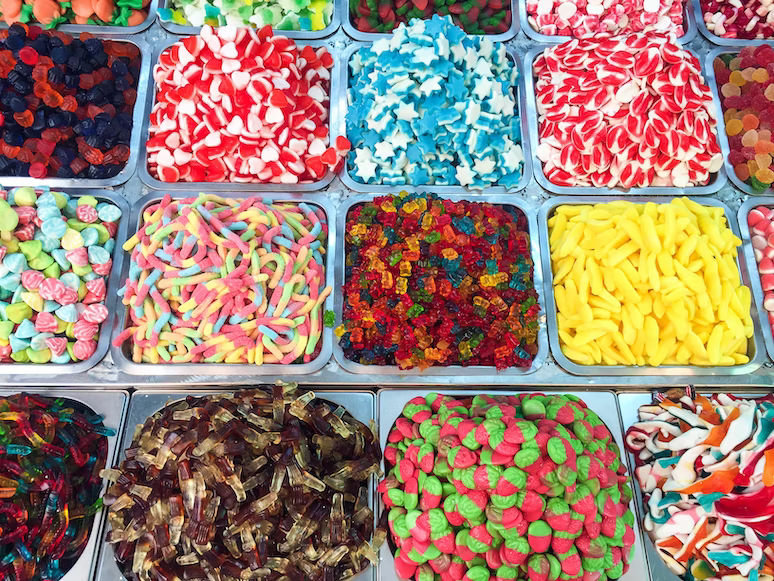Halloween trick-or-treating is back to its pre-pandemic levels as Halloween festivities. Health officials in the United States and Canada are issuing warnings despite the fact that it is highly improbable that strangers would try to intoxicate trick-or-treaters by substituting inexpensive candy with expensive THC-laced treats in order to ensure that sweet-tasting cannabis edibles are kept away from children.
Although it’s still plausible because packaging can look identical, there has never been an example of that actually happening that is known to exist.
Also read: 5 recent TV shows to binge watch this Halloween
Global News reported that parents in Canada’s British Columbia are warned to watch out for any contaminated candy and prevent mix-ups in the Halloween treat bowl.
“Illegal cannabis often comes in bright and colorful packaging designed to look like popular candy kids love to get this time of year,” British Columbia Minister of Public Safety and Solicitor General, Mike Farnworth said.
According to CBS News, the California Department of Public Health outlined a number of symptoms that children who have eaten edibles may suffer.
The biggest problem with cannabis-infused edibles, like chocolates and gummies, is that they frequently resemble other candies. According to UNM Health Sciences Center, the New Mexico Poison & Drug Information Center recently reported a rise in marijuana-related emergency calls since the state legalised recreational cannabis earlier this year.
Also read: Kanye West controversies: Antisemitism, George Floyd, and other things that landed rapper in trouble
“We had zero cases one week, and then suddenly 10 the next,” PharmD Director Susan Smolinske said. “Six of those cases were children, and we know for sure that at least one was an incident of a child who thought they were eating Halloween candy.”
Earlier this year, there were reports about a new alleged threat – rainbow fentanyl.
Over the past 20 years, the very potent synthetic opioid fentanyl has been responsible for thousands of overdoses and fatalities. Drug enforcement officials discovered that fentanyl tablets were being produced in a variety of colours in August 2022.
“Rainbow fentanyl – fentanyl pills and powder that come in a variety of bright colors, shapes and sizes – is a deliberate effort by drug traffickers to drive addiction amongst kids and young adults,” DEA Administrator Anne Milgram said.
The idea that the colours might be a marketing gimmick to draw younger drug users was mentioned in many news reports about this incident. But afterward, some individuals began to associate Halloween with rainbow fentanyl.
Also read: What is Rainbow Fentanyl?
Developments in illicit or recreational drug use frequently translate into Halloween advisories. The Denver Police Department warned parents to watch out for THC-laced edible candies in Halloween goodies in 2014, the year Colorado legalised state-licensed retail sales of recreational marijuana. The warning was posted online by the Denver Police Department.
The department representative acknowledged, however, that “We are not aware of any cases of children ingesting marijuana candy during Halloween season,” this after Halloween had passed.
Similar to 2018, reports in September of deaths related to the use of illicit THC-infused vape cartridges were combined with reports that Pennsylvania authorities had seized commercial THC candies, which were allegedly smuggled from a state where they were legal to buy, to prompt yet another round of Halloween warnings.
The fact that drugs typically cost more than candy is an evident flaw in these arguments; marijuana edibles, for instance, cost at least $1 or $2 for each dose.
The cost of fentanyl is substantially higher. It is plausible to question the main motivation behind a fentanyl dealer’s decision to disguise the narcotic as candy. It seems unlikely that a school-aged child would transform from a casual fentanyl user to a paying addict.
Also read: James Gunn clears air over rivalry between Marvel and DC studios
It might not make sense to offer a young child a sweet laced with THC or a brightly coloured opioid medication, but it’s not impossible, is it? This justification is used to support raising the alert.
These concerns frequently have some element of reality. Fentanyl is unquestionably a hazardous drug. However, American history might be viewed as a series of misgivings about conspirators, witches, immigration, drugs, and so forth. These anxieties manifest as a result of recent social developments.
Yes, things are constantly changing, which can always make some individuals nervous. However, it is also true that these worries are typically exaggerated in hindsight.
The readiness of prominent political officials and news organisations to publicise the warnings about rainbow fentanyl as a Halloween hazard appears novel. Most prior allegations of Halloween sadism lack such well-known spokespersons.
However, calls for safeguarding children from the threats of boogeyman drug dealers return us to the spirit of Halloween: coming up with new ways to keep people frightened at a time when many news outlets seem determined to maintain their audiences by frightening them and increasing political polarisation seems to stall efforts to contrive workable social policies.







